Welcome to the Keto Diet Plan For Beginners. My goal is that you will be able to use the ketogenic diet guide to start your diet and return to it if you have questions or concerns.
~ This post contains affiliate links to help you find the products we use.
You will leave this blog with a strong understanding of how the state of ketosis will help you lose weight and a step-by-step keto guide to help you start your diet today.
Need help or support with the keto diet? Join my Keto Size Me Support Group on Facebook!

Keto Crash Course:
I love the keto diet because it has helped me deal with a lot of issues I never associated with my diet.
Some of the fantastic long term health benefits of being in ketosis include clearer skin, suppressed appetite (I have an enormous appetite), blood sugar stabilization, enhanced mood and brain function (here’s looking at you, ADHD), improved mental clarity, and even better blood work results (some of my favorite people have lowered their cholesterol levels on keto) and of course weight and fat loss.
I have experienced most of these benefits personally and have heard success stories from around the internet of others doing the same.
With that said, it is always important to seek the guidance of your doctor or registered dietitian when trying any new diet, especially if you have preexisting health conditions. So please speak with them first.
What Is Ketosis? The Goal of LCHF Diets
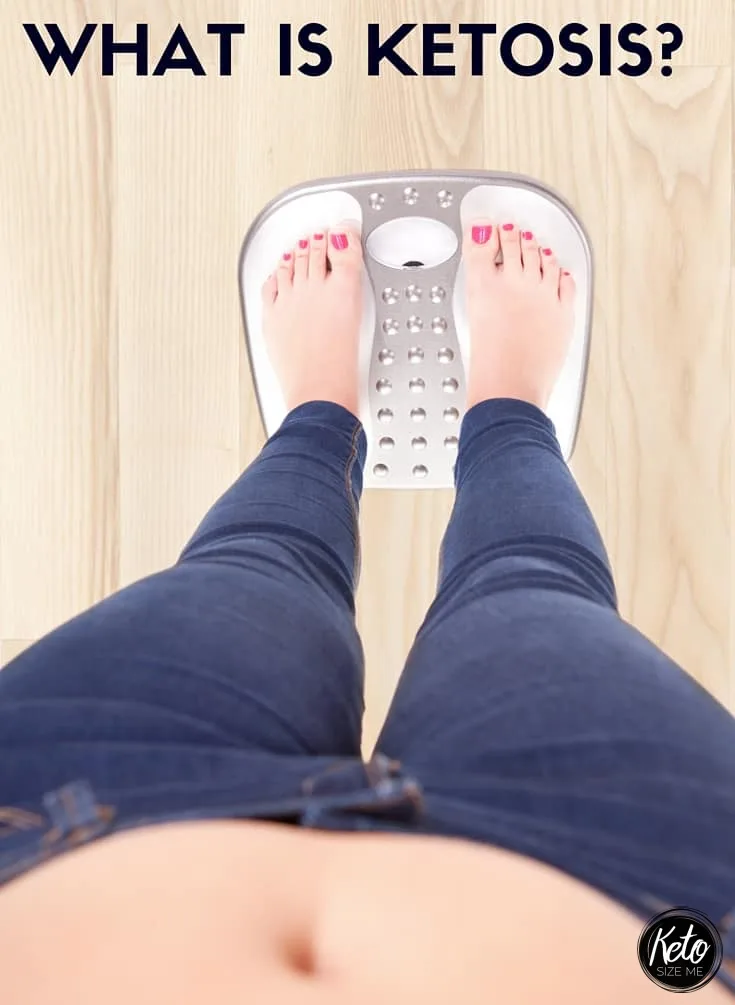
The ketogenic diet is only a fad diet if you make it one. Ketones have been changing people’s lives since the 20s, so the science behind it is nothing new. It was first used to treat children with epilepsy.
Ketosis is a metabolic state of the body that comes from consuming a low-carb diet. Most people keep net carbs under 25 grams, moderate protein intake (based on activity level), and high fat that forces your body to use ketones as its energy source.
By using this macronutrient formula, you are draining the body of its common energy source, glucose forcing your body to create a new energy source.
This new energy source used for everything from breathing to running a marathon is produced using your fat stores. That’s great news because that’s precisely what you’re trying to eliminate!
The Body Before Ketosis:
Think about it like this.
Throughout your life, you have probably lived on the Standard American Diet. This means you’ve consumed more glucose (sugar) than you need to function every single day.
Your body’s response is to send insulin out to capture your glucose and store it in your fat cells as fat.
When you drain the body of the original energy source, it is forced to resort to using the stores you currently have (fat) as a source of energy.
As that fat is burned, it releases your new energy source into your body (ketones), measured in your bloodstream and urine.
So ketosis is the state your body enters when you stop eating sugar and force your body to provide its energy source.
How Long Does It Take To Get Into Ketosis?
Everything about the keto diet is highly personalized, so you may go into ketosis within two days, while it may take someone else a month.
My boys and my parents were in light ketosis within 48 hours of starting keto, and my husband took over a week to test positive for ketosis.
Everything is variable, and there is no “right answer” when getting into ketosis, so don’t get discouraged if you don’t go into ketosis as quickly as others.
I usually start urinating ketones within 24 hours and have keto flu symptoms within a week.
If you notice that you are in ketosis but can’t seem to overcome the symptoms of ketosis by becoming fat-adapted (learn more below), you may need to adjust your diet.
You can quickly and easily measure your ketone level with the KEYTO Breath Sensor (affiliate link) and app. You just download the app and blow into the sensor to test your ketone level. It’s so easy, and you can take it anywhere.
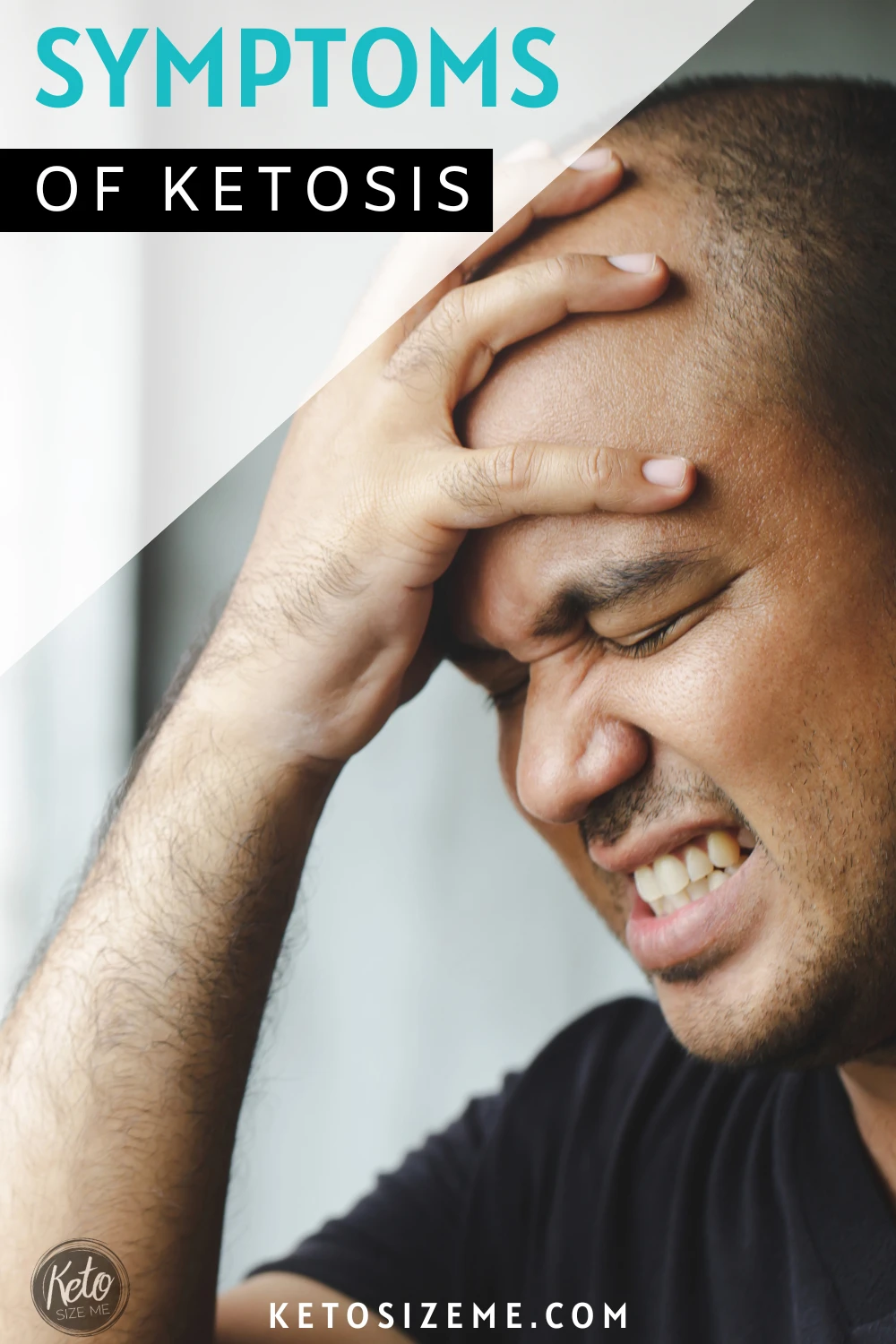
Symptoms of Ketosis
Ketosis looks different for everyone, but I will share many of the most common symptoms with you today.
If something other than what’s listed here is happening to you, do a quick Google search for that symptom and the keto diet to see if other people have reported experiencing it.
The Early Signs:
The most significant impact on how quickly you notice the symptoms of ketosis will have a lot to do with how you ate before you started the diet.
If your diet has a high carb intake and sugar-laden foods, you might experience a bad case of the “Keto Flu within days of starting your diet.
This can last anywhere from 3 days to more than a week.
Early Symptom List:
- Fatigue & Weakness (lack of concentration) or Euphoria
- Headaches
- Irritability
- Metallic taste or sweet taste in your mouth (I experienced this, and it tasted like blood in my mouth)
- Lightheaded / Dizzy upon standing
- Heightened Thirst
- Hunger / Sweet or Carb Cravings
- Dry mouth possibly paired with “Keto Breath.”
- Stomach Discomfort / Mild Nausea / Cramping
- Trouble Sleeping or Staying Asleep (early waking)
- Water weight loss (perhaps an excessive loss of weight within the first two weeks)
- Frequent Urination
- Allergies or cold-like symptoms may develop flair up
- Hair loss or Hair growth
For the ladies:
Menstrual Cycle Issues: You may experience longer, shorter, earlier, or later periods because of keto.
Each woman is different, and I have experienced every one of these issues with my period while on the keto diet. Your period should eventually go back to normal, but if it doesn’t, speak with your doctor.
Our Experience With Keto Side Effects:
I’m not sure when I went into ketosis because I didn’t have keto stix or a ketone monitor, but within a week, the smell of my breath changed, and I started getting the keto flu.
I could have sworn the white peach fuzz hair on my face was getting more prominent, but I was also losing so much hair from my head that it was starting to worry me.
Thankfully the hair loss only lasted a few weeks, so don’t worry if your hair starts acting wonky. Hair loss can be caused by low-calorie intake or just a change in macros.
Before keto, I would break out every month with hormonal acne, get ridiculously bloated, and feel like crap. Now my periods are 100 times better, and I can’t imagine returning to that. Also, a big hooray for no acne!
My seven-year-old daughter weighs 50 pounds, and after one day of low carb high-fat, she was in deep ketosis and threw up. After that, her symptoms were gone.
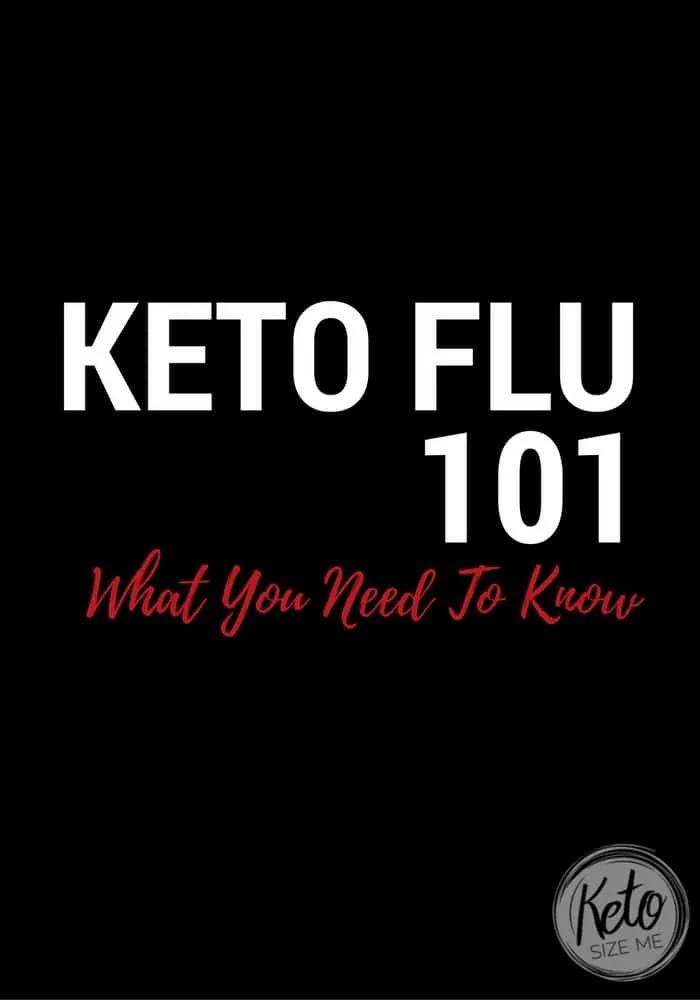
What Is The Keto Flu & How To Avoid It:
The “keto flu” is what you may experience when going through a carbohydrate withdrawal.
There is a good and bad side to this. Going on a diet that makes you feel bad can make it harder to stick to. Thankfully, if you prepare yourself, you will likely suffer less and stick with the process.
Going through sugar (carb) withdrawal is a huge benefit of the ketogenic diet, even if it sucks.
Once your body goes through withdrawal, you’ll find that the temptations to overeat and make poor food choices won’t be as big of an obstacle as before.
Common Keto Flu Symptoms:
No two people experience the keto flu in the same way, so the symptoms can range from mild to a full-blown flu-like condition and include:
- Body aches
- Irritability
- Nausea
- Fatigue or Difficulty Sleeping
- Cramps
- Headaches
- Diarrhea or Constipation
- In some extreme cases, high blood pressure and arrhythmia
If you experience severe symptoms or have a fever (not a sign of ketosis), please get in touch with your doctor.
How Long Does Keto Flu Last?
The duration of keto flu varies. While some dieters may have slight and unnoticeable symptoms for a day or two, others might have symptoms for a week or more.
It all depends on how quickly your body adapts to a reduction in carbs.
I didn’t eat a ton of carbs before starting keto, and when I knew I would start, I stopped eating bread a few days before to prepare.
For those reasons, my initial induction into ketosis was pretty painless. I did have a mild headache and was tired for 2-3 days, but after that, I was good to go.
I also deal with the occasional light-headedness, but I attribute that to not drinking enough water (which I still struggle with).
Tips To Avoid The Keto Flu Or Ease Symptoms:
- Add in a pre-diet phase where you start wearing yourself off carbs before going keto.
- Be patient with yourself. A low carb diet is a big change a high fat diet might seem impossible at first. Go easy on yourself and your body.
- Listen to your body for cues like thirst (drink water) and dehydration (supplement with electrolytes).
- Add electrolytes to your water every day.
Lack of electrolytes in the body is one of the leading causes of keto flu. Electrolytes are the minerals found in the body, affecting the water content, acidity, blood, and functionality of the muscles.
My favorite brand is Biosteel because I love the taste. It’s not overly salty like Drip Drop or Liquid I.V.
Low-carb diets feature lower insulin levels that can signal the kidneys to discard excess water. This causes you to drink more, flushing out electrolytes, where sodium, potassium, and magnesium deficiencies can occur.
You will have to replenish them by using supplements and food.
- Salt: Normally, the average diet is overloaded with salt.
The ketogenic diet eliminates refined and processed food and focuses on eating whole real food, so when you start keto, you will naturally reduce salt intake, which reduces water retention.
Since a low-carb diet is naturally diuretic, there is no need to worry about water retention, so feel free to put the salt back on the table! 5 grams of salt daily is ideal for keto flu and replenishing electrolytes.
You can also get it from drinking 2 cups of broth or adding soy sauce and other sauces that have potassium to your meals. I love chicken broth, and I usually drank a bowl a day when I first started keto.
Bone broth works well and only requires the simmering of chicken, beef, lamb, and meat bones in water for about a day, or even canned broth.
- Magnesium: Take 300mg a day to help with keto flu. I took this supplement to help with my migraines and still take it today.
Life After The Keto Flu:
Once keto flu is over; you can expect a huge surge in energy levels. And once that sugar habit is fully kicked, you will likely feel better than ever.
My dad is probably the best example I have seen of this.
He went from being a full-on couch potato to a working machine. He was off the couch doing projects around the house that my mom had been asking him to do for years!
We couldn’t get him to sit still. His energy level was through the roof, and he even looked younger.
It is amazing what a difference eating the right foods can make.
Once your body adapts to running on ketones, you can expect to experience the following:
- Increased awareness/concentration
- More energy
- Better, more balanced sleep cycles
- Stabilized Moods
- Weight Loss & Fat Loss
- Reduced Appetite
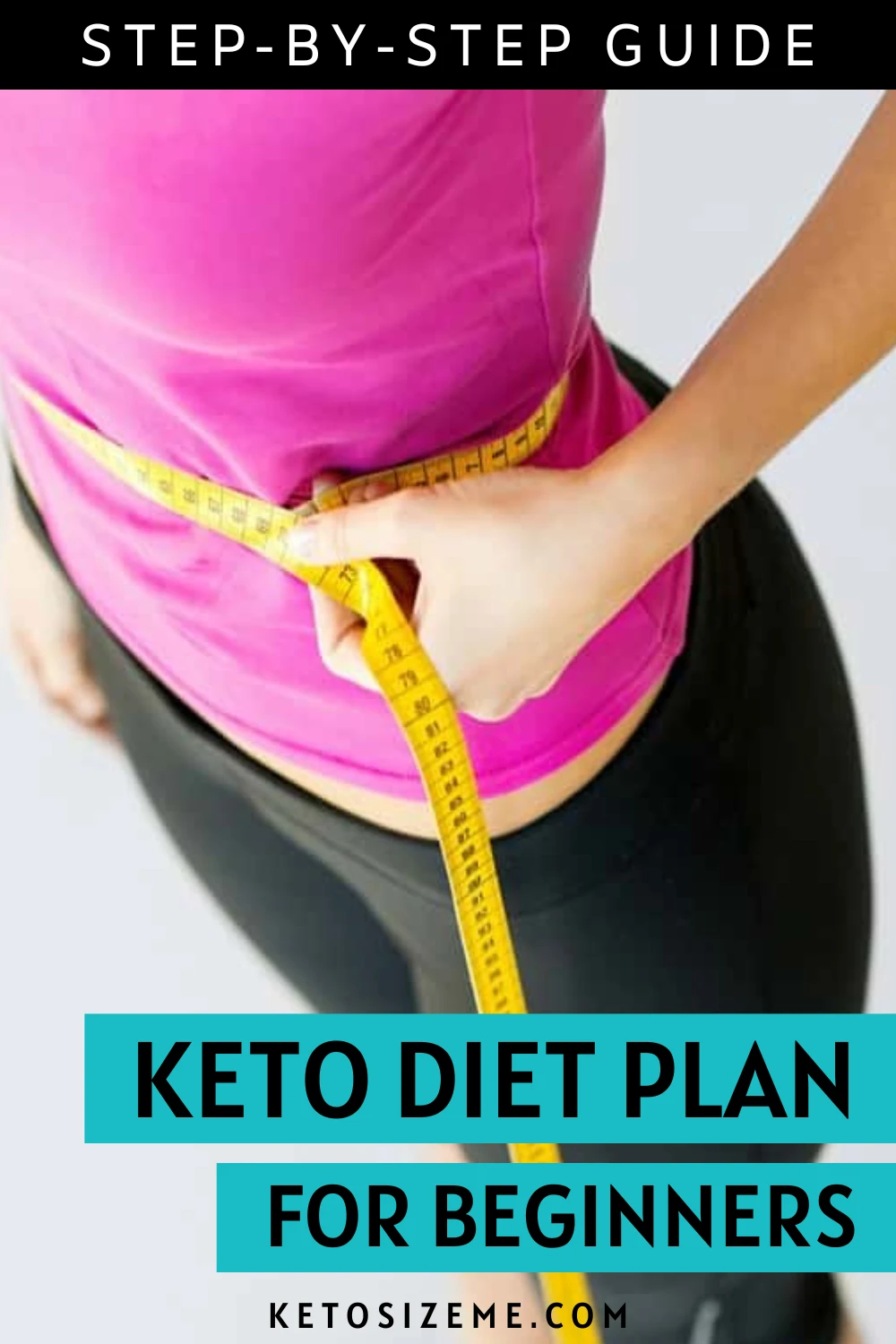
Keto Diet Plan For Beginners: Step By Step Guide
Now that you’ve gone through the keto crash course and better understand, it’s time to get started with your personalized diet plan.
You can use this step-by-step guide to start keto today.
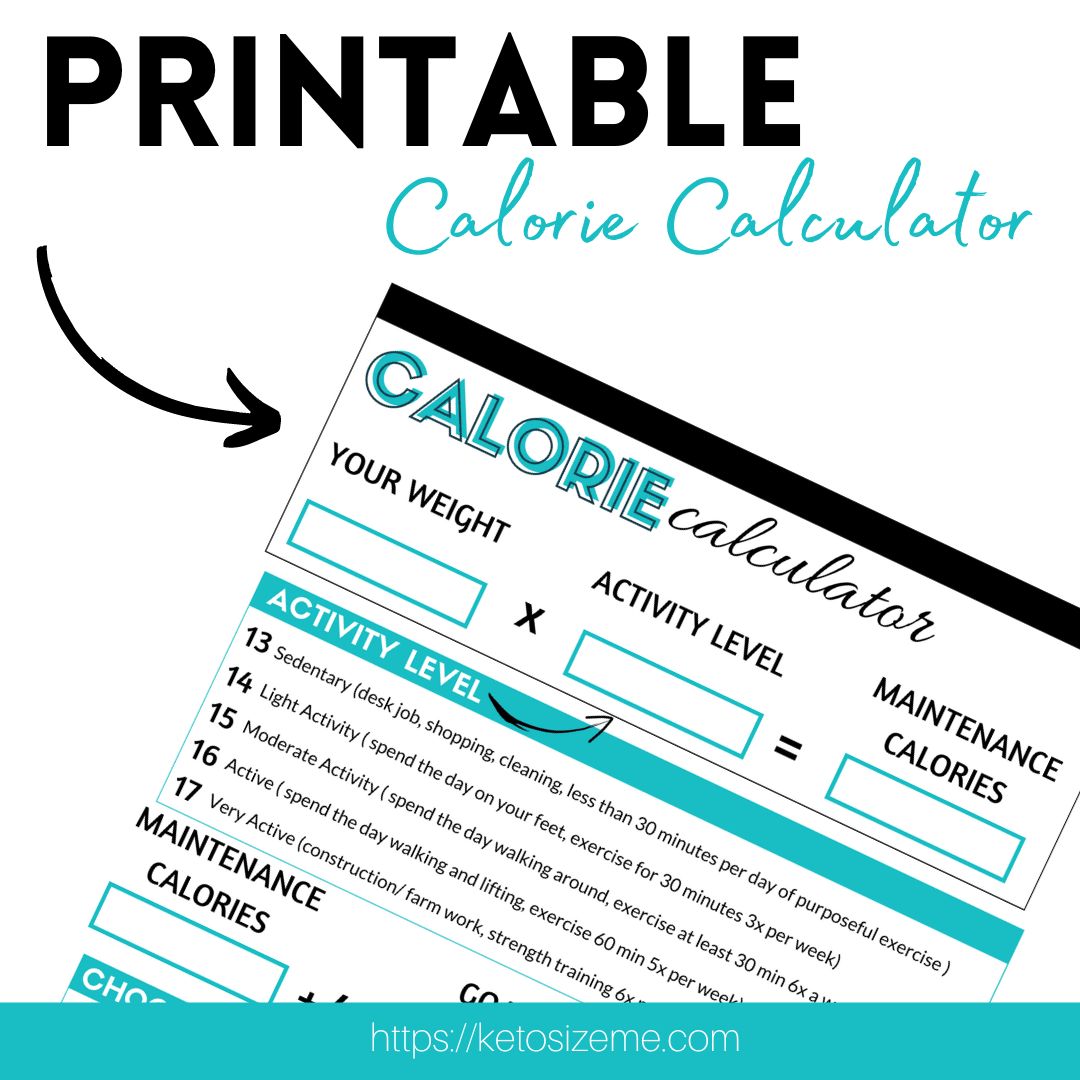
Step 1: Figure out how many calories you should eat to lose weight
Figuring out how many calories you need each day isn’t difficult. You can learn how to calculate calories for weight loss using the tutorial from my blog, Faithfully Free.
You can also print out a free keto calorie calculator worksheet to make it simple.

Step 2: Choose your version of keto:
Using the daily calorie total from the step above, you are ready to figure out your keto macros.
You can print your free keto macro calculator worksheet here.
I am sharing my three favorite versions of keto here, but you can mix and match these macros using the following guidelines:
Carbohydrates: 1%-25% carbohydrates, with the most common ranges falling in the 1%-10% zone.
Healthy Fats: 60% – 90% fat, with the most common ranges falling in the 60% – 80% zone.
Protein: 10% – 40% protein, with the most common ranges falling in the 15% – 20% zone.
Extreme Keto Diet: With this version, you will have the maximum fat intake and low carbs. I think of this a short-term diet to kickstart the keto lifestyle.
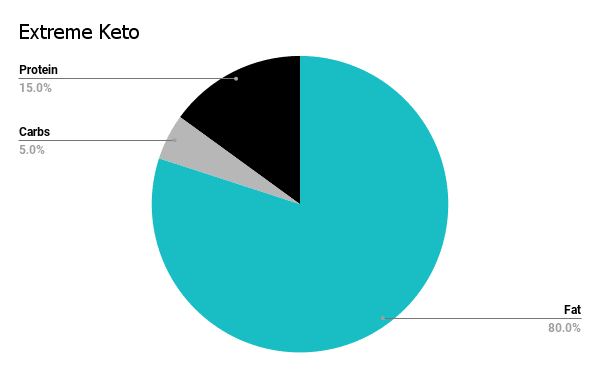
Standard Ketogenic Diet: This diet offers maximum carbohydrate intake and a little more protein.

Protein Lovers Keto Diet: This version is for people who are into strength training or like to eat more protein. This plan offers the maximum protein and lowest carb count.

Regardless of how you choose to break up your macros, you should find success in this program. Tailor your macros in a way that works best for you.
If you are having trouble figuring out your macros, you can use the free worksheet above.
Step 3: Plan Your Keto Meals
When it comes to keto meal planning, it can be as simple or as complicated as you make it. I recommend keeping it simple for the first two or three weeks.
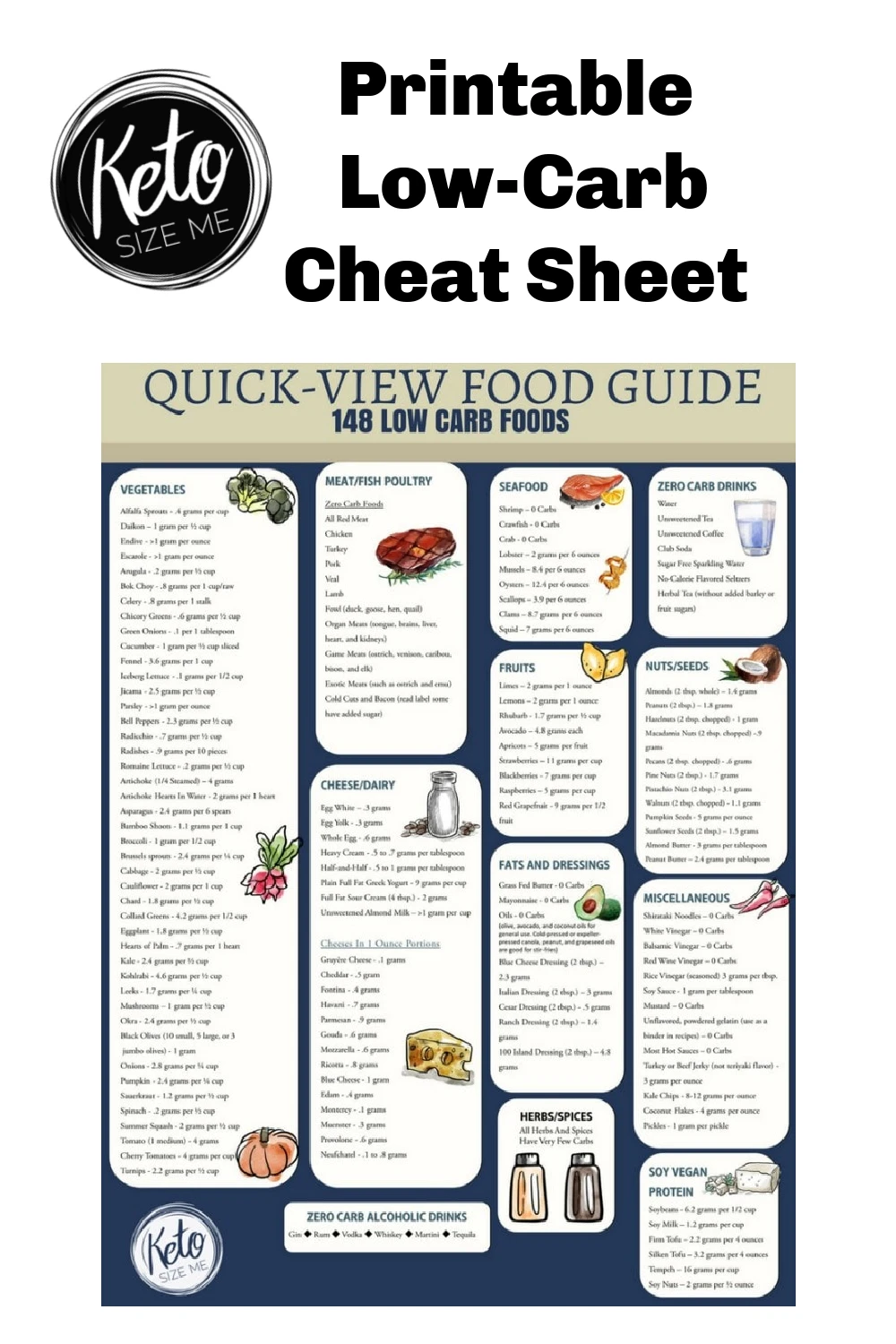
I have a lot of resources to help make your transition easier (continued below). You can start with my printable low-carb cheat sheet. You can use my printables below to help you navigate the grocery store!
Step 4: Track Your Progress & Reassess As Needed:
One way to stay motivated is to track your progress. There are a few ways to track your progress, and these ideas are a few of my favorites.
Track Your Stats:
Using a fitness journal (or regular notebook), track your weight and measurements. I recommend weighing no more than three times per week (M, W, F, for example).
- Weight: It is best to weigh fully nude first thing in the morning.
- Waist: Measure right above our belly button.
- Hips: Stand with your feet about 4 inches apart and measure the widest part of your hips.
- Thigh: Stand with your feet about 12 inches apart. Measure your upper thigh at the widest part
- Calf: Place your weight on your dominant leg and measure your calf at its widest part – about halfway between your knee and ankle.
- Arm: Place the tape measure around your flexed bicep, then relax the muscle and tighten the tape.
Take progress photos. I like to take photos on the same day every week. Take pictures of the front of your body, the back, and the side.
You might be surprised in the changes you see from week to week!
Journal your feelings, what worked for you during the week, what didn’t, your goals, and anything else you think will help you stay motivated.
When to reassess: Once you hit your goal weight or a weight loss plateau, you should reaccess your calories and macros.
What To Eat On The Keto Diet & Foods To Avoid:
Sometimes what to eat on a diet can be a little confusing. Check out the resources below, and our post is it keto? to learn more about foods to eat and foods to avoid.
Keto Diet Tips Beginners:
Anything worth doing hurts (at least a little). Please, whatever you do, don’t give up or give in. You can do this!
- Remember why you’re doing this. This is a forever change. Yes, the diet will change as you progress, but you’re changing your life forever, and a few days are worth it!
- Exercise helps too. I know you’re tired, but spending 10 minutes a day working on those abs will motivate you to keep going. One healthy thing leads to another; the next thing you know, you’ve reached your goal and are inspiring others to do the same.
- Get some keto strips and test yourself daily. These strips don’t always work, but you should be fine early on. You may notice trace amounts of ketone bodies in your urine within three days. Trust me, that will keep you motivated!
- Start keto with a friend or join a group on Facebook. Support is essential, and finding like-minded people to help you when you have questions or push you when you need motivation is paramount!
- Start by eating smaller meals more often.
- Be sure to track everything and stay within your range, but eating a little throughout the day can be very helpful when first starting.
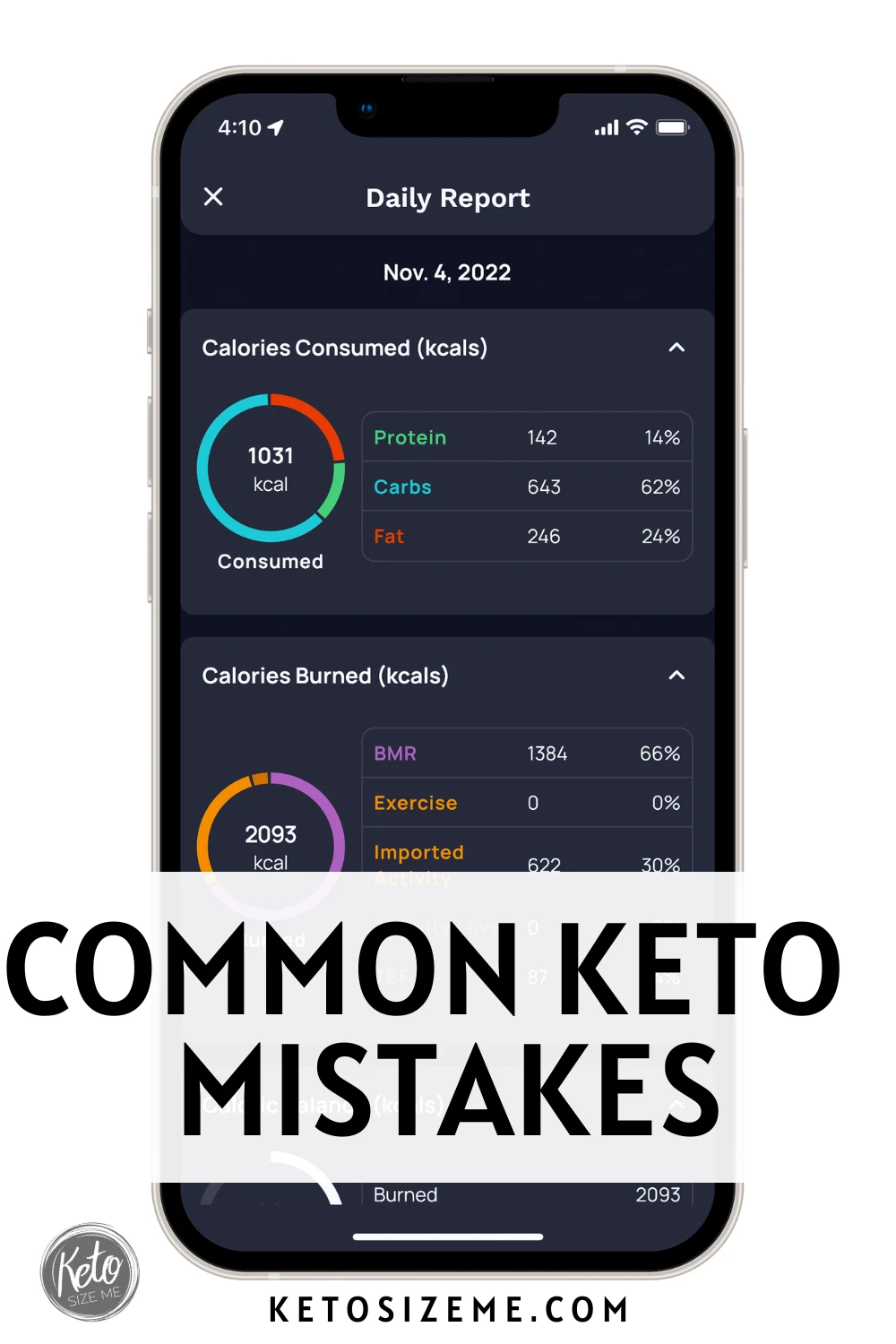
Common Keto Diet Mistakes:
I find that first-time keto dieters are the best at following the diet. Something happens after you’ve been on keto before, where you think you know what you’re doing, but you seem to have forgotten the basics.
I know because it’s happened to me. I’m not saying newbies never make mistakes, but I see more dissatisfaction from those of us who think we have it down to a science.
Mistakes People Make On The Keto Diet:
- Failure To Plan: How you plan is up to you, but you need a plan. You need to know what you need to do and how you will do it. Do not just “wing it.”
- Consuming too much fat: Fats like coconut oil taste amazing but go easy on the fat bombs.
- Eating too many carbs: This seems obvious, but carbohydrates add up quickly and can be hidden in everything we eat.
- Not getting adequate protein: Losing muscle mass is both unsightly and unhealthy so eat enough of this building block to keep your muscles from disappearing.
- Insufficient nutrients and electrolytes: will make you feel like crap and potentially lead to malnutrition.
- Dehydration: This diet is diuretic in nature, so you must drink plenty of water (don’t worry, you will not gain water weight).
- Stagnation: If you stop seeing results after two to three weeks of following a plan, make some adjustments.
- Disappointment: Quick weight loss is expected on keto, but it is not the norm. Take the win and keep moving forward. You didn’t gain fat in a week; give your body time to lose it.
- Not Tracking: If you aren’t tracking your foods, how do you know what’s working? If you’re eating more than your daily calories, you won’t lose body fat. Download Cronometer right now!
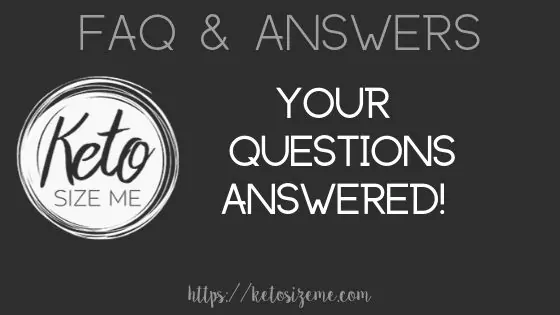
Keto Frequently Asked Questions:
What Happens After The Fat Is Gone?
If your body is burning fat from the reserves you’ve stored over years of a high-carb (sugar-loaded) diet, you can expect to burn that fat on the ketogenic diet. After you’ve burned your body fat stores, your body will continue to use the dietary fat you eat to fuel itself.
Will I Be Hungry On The Keto Diet?
We live in a nation where food is widely available, where you can grab a snack at an electronics store, and yet we fear the state of hunger. We can’t even fear actual hunger because most of us have never truly experienced real hunger, so I should say we fear the idea of hunger.
One of the most common and surprising effects of adapting to the keto diet is constantly feeling full. You will probably notice this change within a week or two of starting keto.
If you’re used to being hungry between meals and hunger pangs within a few hours of eating, you’ll notice that they begin to fade quickly.
This is one of the reasons people who start a ketogenic diet and make it through the first few weeks have no problem staying on it long-term.
Many diets you have tried in the past have most likely left you feeling hungry and frustrated, and you don’t experience that with the keto diet.
The amount of fat you eat daily keeps your body satisfied and full, and the lack of insulin spikes doesn’t make you crave food when your body doesn’t need it.
Fats and protein are what your body is designed to run on, not sugar and chemically-laden processed foods. The critical components of living the keto lifestyle are fats and proteins.
Fats and protein have the power to satiate hunger. If you’ve ever eaten a big bowl of cereal, salad, or even a banana and felt hungry afterward, you can attribute that to the hunger-inducing power of carbohydrates.
What Are Net Carbs?
Net carbs are carbohydrates minus fiber and sugar alcohols. I share everything you need to know about net carbs and how to figure net carbs in this post.
How Do I Track My Food?
Food tracking is so much easier than it used to be. Long gone are the days of using a pencil and paper and having to calculate everything by hand.
Today we have amazing apps that do everything for us, and all we have to do is scan the barcode or enter the URL of our keto recipes.
My favorite app is Cronometer, but I started with My Fitness Pal and have my fitness pal keto tutorial on how to set it up if you’re interested.
With these apps, you input your macros, and they track how you’re doing.
Update: I just learned that MyFitnessPal is now charging $20 monthly for a barcode scanner which is too expensive! Hopefully, they get enough complaints to add the scanner to the free account.
Read About My Real Life Experience With Keto:
When I started this blog, I shared my keto journey. I shared about choosing to go keto, my keto diet week 1, week 2 keto experience, and keto week 3 results.
In the posts above, I shared every food I ate, how I felt about my diet, and my weight loss stats.
Spoiler: I lost a total of 10.6 lbs and 7 inches! I was thrilled with my results.
If you have any questions, please reach out to me! I would be happy to help in any way I can! 🙂 Let me know how your Keto Diet Plan works out for you, and until next time…. stay full!

